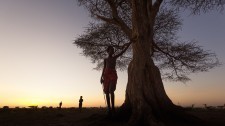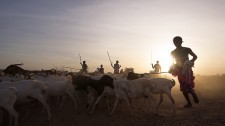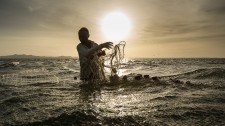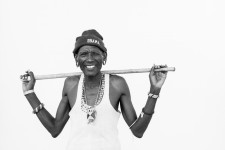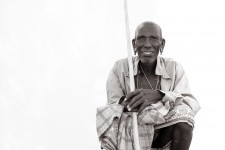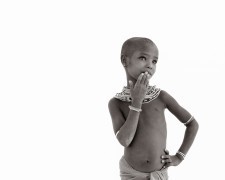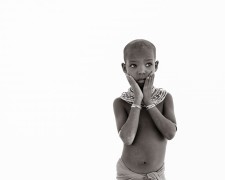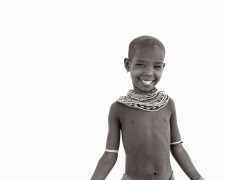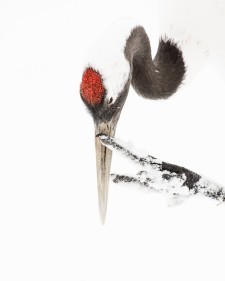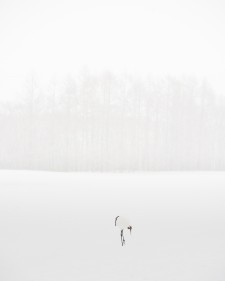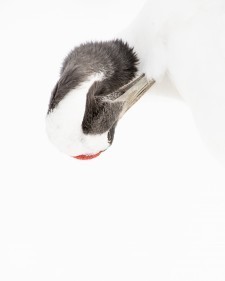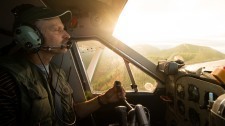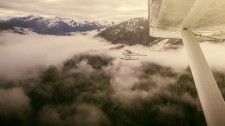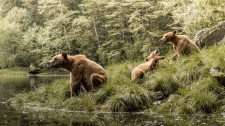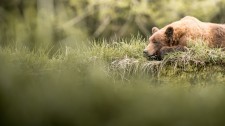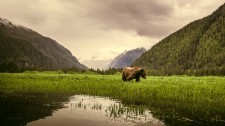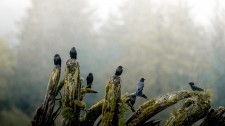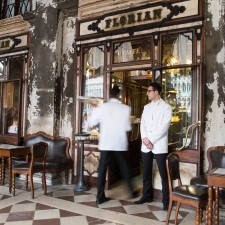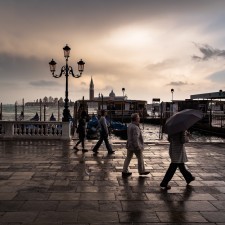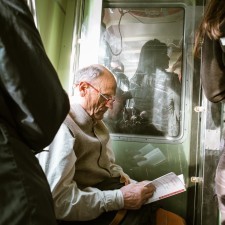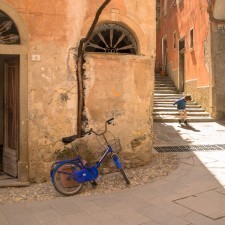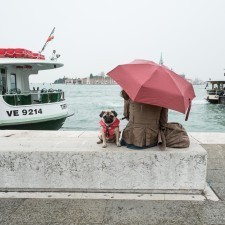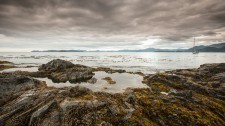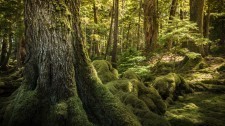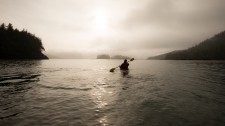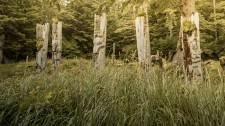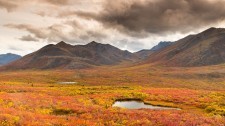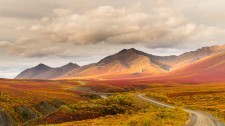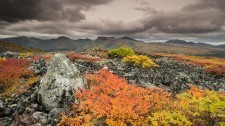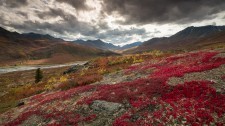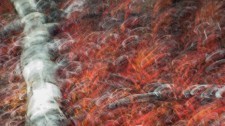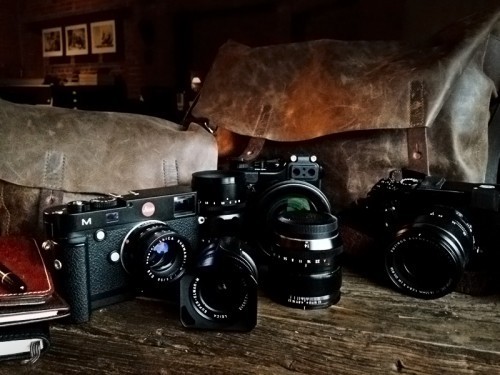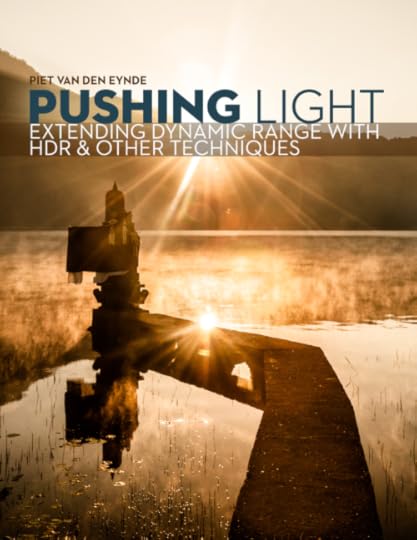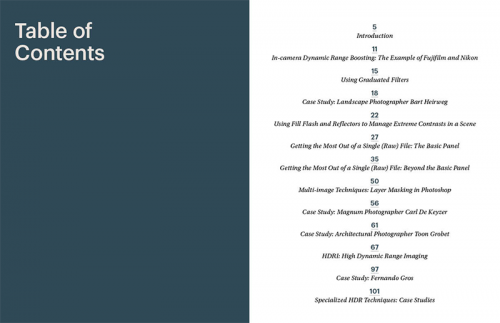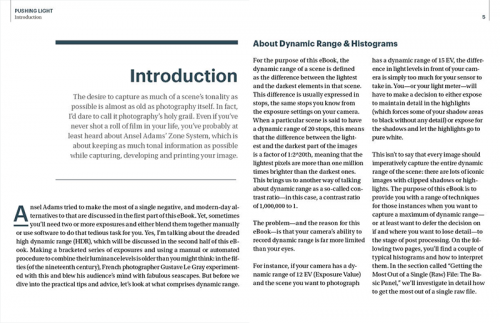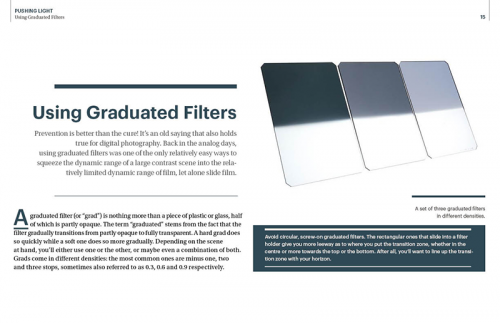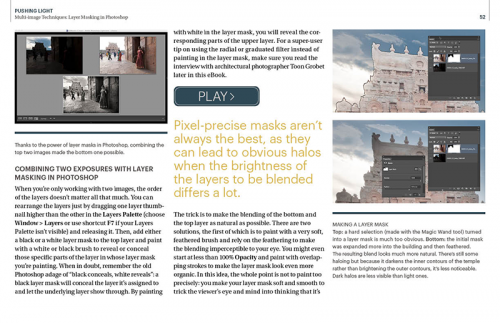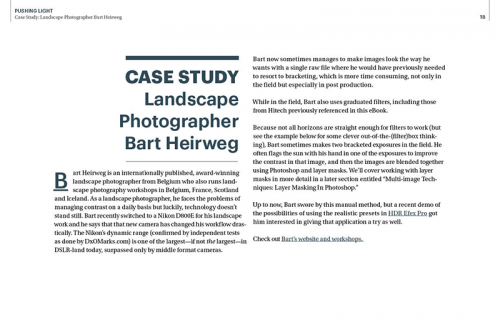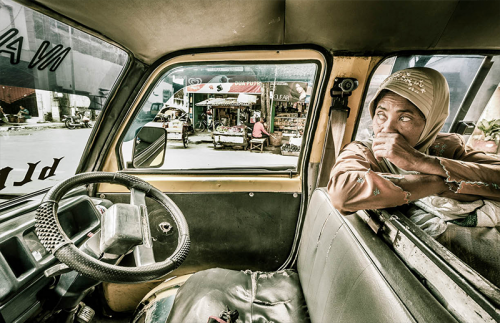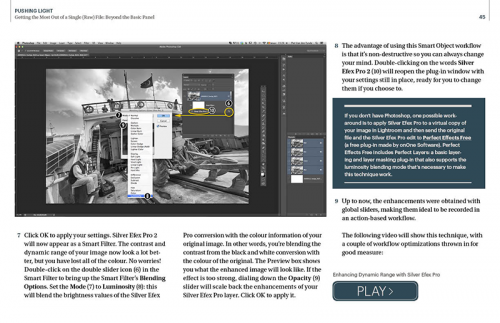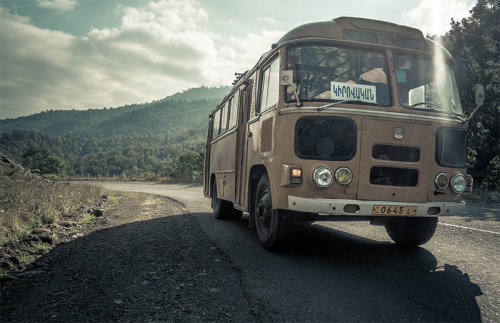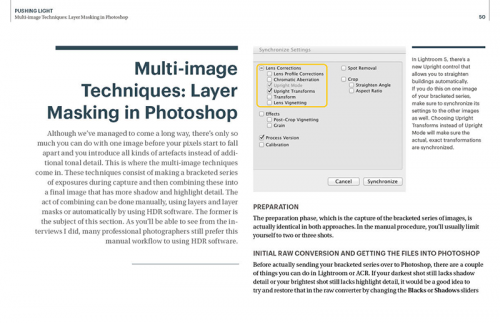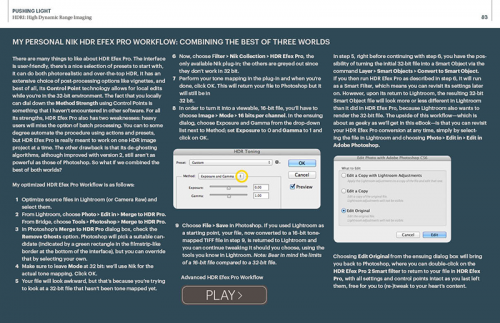David duChemin's Blog, page 30
January 22, 2014
The Mirrorless Post
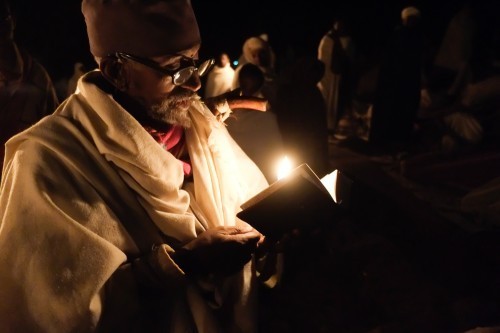
Fuji XE-1, 1/10 @ 2.8, ISO 6400, handheld.
I’m convinced. After a week in Lalibela, Ethiopia, and a safari in Kenya, I’m ready to leave my heavy pro DSLR gear at home more often. I went to Ethiopia with a Fuji XE-1 and a Leica M (240), both with a small kit of lenses (18-55 and 55-200 for the Fuji, and 21mm, 50mm, and 75mm for the Leica), and went mirror-less all week. It wasn’t my first time going so light. The last time I went to Italy for a month I brought only the Fuji and 2 lenses, but that trip had less hanging on it, and the conditions were less taxing. Below are my thoughts, in no particular order, after giving these cameras a run for their money. But first, the usual caveat: I like gear. I like the way it feels in my hands when it feels right. I like gear that gets out of the way as much as possible. But I’m OK with constraints, I know there is no perfect camera, and ultimately cameras don’t make photographs – photographers do. So don’t look for pixel-peeping here. And don’t look for me to tell you to get rid of your DLSR gear. For some that might be a great move, for others not so much.
It was only a few years ago I was lugging 2 pro-size DSLR bodies and a kit of large, fast, heavy lenses. It wore me out. It made me take myself too seriously. It made me stand out in a crowd and intimidated others. And since breaking my feet in Italy I find walking tough and struggle to do my job with such heavy gear. What a relief, then, to walk all day with two much lighter rangefinder bodies and a couple lenses. I hardly noticed it was there. And when things got really tight, it was easier to manoeuvre without the bulk of large holsters at my side. I could stay out longer, walk further, and enjoy myself more – and this translated to more opportunities and fresh eyes to see those opportunities when they arose.
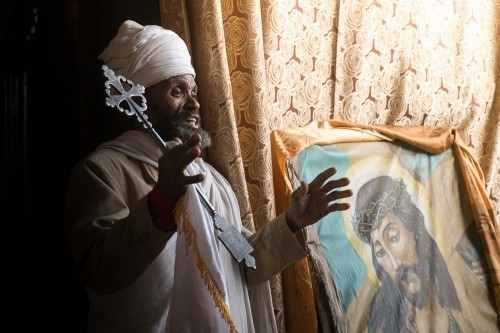
Fuji XE-1. 1/100 @ f/4.0, ISO 800.
The Fuji XE-1
I really like this camera. It makes beautiful 16mp digital files and performs well in low light up to about 3200, which is where it maxes out for me, at least in colour. But for a guy who used to very reluctantly go up to ISO 800, this is about as much latitude as I need. The focus is fast enough for me for the kind of work I was doing, and when it nails the focus it nails it well. I understand the XE-2 is even better. Remember, I’m not photographing sports or fast-moving subjects. But I didn’t once feel it couldn’t keep up with me (if I’d had longer lenses I’d be trying for images that might quickly have shown the limitations here.) The available lenses are excellent for as light as they are, and I could happily photograph 80% of the stuff I love to photograph with just their 14 or 18mm. I’ll be looking into their 24mm (roughly 35mm) when I get home, in part because it’s faster, and in part because it’s one of the few lenses Fuji puts a focus scale on (the other is the 14mm), and that’s a no-brainer to me. If you want to access other lenses, there are adapters to use the Leica M lenses, but then you’re manual focus only. Both the Fuji and Leica are also more discreet – even in burst mode they’re much quieter. Want something even quieter, get a Fuji x100s. Almost silent.
What don’t I love? Well, it’s quirky. It’s a small camera and there are a few too many little buttons. I can’t tell you how many times I end up in Macro mode accidentally. The dials turn a little too easily and I’ve often ended up with my EV compensation dial at +2 or -2 when I didn’t put it there. And then there’s the display in the electronic viewfinder. Move the exposure around all you want and there’s no apparent change to the image, nor to the histogram that’s displayed. My Leica shows real-time adjustment on the LCD or EVF, and the histogram changes too. With the Fuji I need to make the image, then look at the histogram on the resulting image during playback – it’s very clunky. And thought I understand the location of the button has changed, I find the weird manual gymnastics I have to do to change my focus point, and with both hands no less, frustrating. Oh, and when you shoot in burst mode – either 3 or 6 fps – it’s really, really awkward to look through those frames. For whatever reason only God and the weird engineers at Fuji know, the burst shots are clustered together and not viewed as individual frames. It’s like their stacked in their own group and you’ve got to go through yet another series of counter-intuitive (to me) button-presses. I shouldn’t need to know a secret handshake to look at my images. But when I do, the image quality is staggering and that, combined with the small package and reasonable price, is why people are flocking to the Fuji. Exceptional image quality.
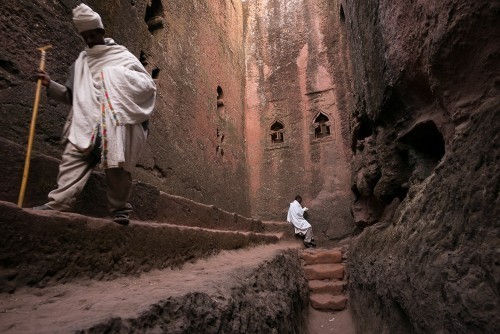
Leica M (240). 1/60 @ f/4.0, ISO 800
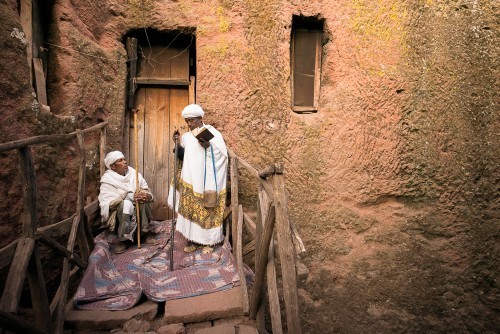
Leica M (240). 1/60 @ f/5.6, ISO 800
The Leica M (Type 240)
What a beautiful camera to hold and photograph with. A manual-focus-only camera, it takes some getting used to but I see myself using this happily, even as my main camera, for years to come. It’s like the cameras I grew up using and I’m amazed at how muscle memory has kicked in. I can work really fast with the Leica after only 3 weeks. The ergonomics work for me, the image files are beautiful, and as long as you don’t ask it to do much in low-light, it’s amazing. Even then, I like a little grain and I shot a balloon launch at 6am in near darkness @6400 and the files are better than I expected. And when you can hand-hold this and get sharp images at almost 1/2 second shutter speed, there are times I just don’t need the higher ISO.
I used a Leica 21/3.4 lens for almost the whole trip and quickly got used to zone focusing and just raising the camera to my eye and shooting. I use the EVF (electronic viewfinder) that’s available separately, and with it I get an in-viewfinder histogram, an accurate sense of my framing, and the ability to hinge it up and shoot from my chest while looking down. Is it expensive? Yes. Is it worth it? For many people, maybe not. And until I started working with this Leica M, I was ready to just use Fuji, and for the price of the Leica and one lens you could get 2 Fujis, every lens they make, and have money left over to go somewhere amazing. But a couple weeks with it and I’m hooked. You can pry it from my cold dead fingers, if you’re willing to fight off my ghost. For me, it’s that amazing. But it’s pricey and the lenses are astonishingly expensive.
So why the Leica at all? Why spend so much on a camera? Without doubt the images are beautiful within certain constraints. But, with apologies to the purists, so are the images from the Fuji. Different, but beautiful. For me it comes down to process. It’s the reason craftsmen all prefer one tool to another. It fits better in the hand, gets out of the way when it matters, and allows me to work the way I work best. For me that’s the beauty of the Leica. It’s simplicity is worth a premium to me. I like that the buttons and dials are kept to a minimum, and I like that when I use zone focusing and I nail it, the Leica is faster than any of my DSLRS in terms of seizing the moment. All of that means I am more present in the moment and that is more important to a photographer than anything. Whatever camera does that for you is the right camera. Little else matters.
One of the barriers to my getting a Leica rangefinder before (aside from the price) has been the focusing. It’s fully manual and I’ve never found focusing a rangefinder as easy as I’d like. A friend of mine recently told me his efforts to focus his M8 were like a monkey f*cking a football. I’m not sure what that means but it paints a picture. That’d be one frustrated monkey. With the M, the electronic viewfinder (an additional accessory) and LiveView on the rear LCD helps enormously. I still use the traditional optical viewfinder to focus at times, but when using the EVF and LiveView there’s now a focusing assist which zooms in to 5x or 10x the moment you touch the focus ring, and focus is confirmed with focus peaking, the in-focus edges being highlighted with red. Combined with zone focusing (I’ll discuss this in a future article) the only other thing I needed was mindfulness, and this camera allows me to remain in the moment beautifully (as long as the EVF doesn’t hang, which it does once in a while, requiring a quick on and off of the camera).
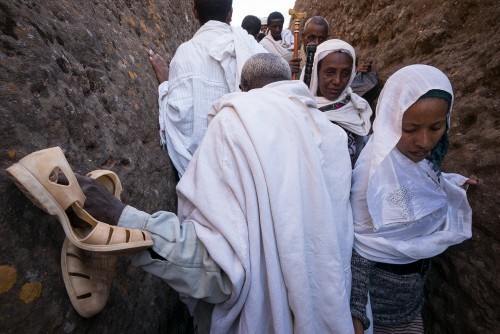
Leica M (240). 1/90 @ f/8.0, ISO 800
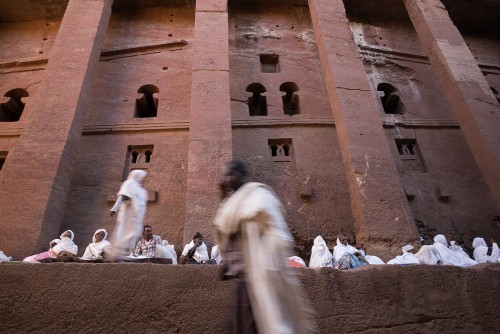
Leica M (240). 1/15 @ f/8.0, ISO 500
Going Mirrorless
Going without a mirror is not the point. It’s the advantages these smaller cameras bring, and more and more those advantages are ours without the loss of image quality that (among other reasons) once drove us to larger DSLRs. Will I ditch my DSLR gear? No. I’m not really a one-or-the-other guy when I don’t have to be. For the foreseeable while there will be times I want my tilt-shift, super-telephoto, and macro lenses. I’ll want the DSLR kit for the weather sealing, too. My next safari will be made with two systems – the Nikon with the largest lenses, and the Leica with a couple primes. But would I do a trip like this, or Lalibela, or Italy, or even the Yukon trip I did this year, with just the Leica and Fuji? I sure would. As long as weather sealing, large lenses, and really rapid bursts were not needed.
Are the Fuji or Leica the only mirror-less options? Not at all. There’s also Olympus. And Sony. And Panasonic. All making mirror-less cameras with pros and cons. For me the Leica wins for image quality and feel, but before I started using it, I was really, really happy with the Fuji. Others are faster (Olympus OM-D is crazy responsive and has killer optics) or house higher-resolution sensors (Sony and Leica use 24mpx, which is a sweet spot for me, and Sony too has amazing lenses), so you’ll decide on what matters to you and get the camera that works for you. Get it into your hands, play with it, and know what matters to you. But remember, it’s really, really unlikely that your new camera will make you a better photographer – that’s your job.
The hardest part of the transition, and my biggest question, was about confidence. Were these cameras going to be able to give me the images I wanted? Could I trust them? The answer has been a resounding yes. It took a while but I’m happily there now. The switch to an electronic viewfinder also took a little time, but now that I’m used to it, I love it. The quirks of the Fuji still make me a little crazy – I can go from “I love this camera!” to wanting to throw it out a window, pretty quickly. But I’m learning.
Since most of you are more interested in my reaction to the Fuji, here’s my final word on it: I love using it (despite the quirks, which are not few). I love the images it makes. I like the growing lens selection. With an exclusively electronic viewfinder, the batteries run down faster than I’d like, so I carry a few more than I think I’ll need. Out of the box it’s lighter than I like and feels hard to hold – so I added a Really Right Stuff L-plate and grip. The strap it comes with is way too short and I hate branded straps, so I got a beautiful leather sling from Cub & Co. 16mp is fine, but I’d prefer 24mp, particularly as I often crop to 4:5, 1:1, or 16:9. A few more pixels would be great for those bigger prints. A 24mp, full-frame Fuji XE-3 would have me at hello.
For the vast majority of my work for the foreseeable future, I’ll be using my Leica with Fuji gear on the other shoulder. I’ve lost nothing in image quality for the kind of work I do, and the contexts in which I photograph. I’ve gained freedom. Some will find that freedom in larger DSLRs, I find it now in the lighter gear. My final recommendation: if the idea of working much, much lighter is appealing, then we’re at the point where the smaller cameras are well worth looking at for many applications. The Fuji XE-1 or XE-2 is a great place to start that search. If the idea of working light, and with the greatest simplicity, appeals to you – and your budget allows it – the Leica M (240) is a beautiful, beautiful camera, and with it Leica becomes a truly workable tool for me, for the first time.
Remember, it’s about the right tool, in the hands of each craftsman, for the job. For some the Fuji, or another mirrorless option, will do it all. For others, especially photographers working where longer lenses, fast action, and harsher conditions are an unavoidable consideration, they might remain an attractive second system for work that doesn’t demand as much.
Wow, that was a lot of words! I know this is a bit of a jumble of thoughts. I won’t be getting a gig doing camera reviews any time soon. Still, I hope it’s helpful. Any questions? Just don’t make them too technical, there are others much more suited to that dialogue than I am.
*Update – You’ll see it in the comments but it looks like a firmware update for the XE-1 was released since I left home and it addresses some of the software-based issues, like real-time exposure previews and the viewing of burst mode stacks. Brilliant. Thanks for the intel, friends. Much appreciated!
January 19, 2014
Towards Mastery. Again.
It’s been a while since I’ve posted a desktop wallpaper, I’m hoping this makes up for the absence. Enjoy! Photographed this morning on the Maasai Mara, Kenya.
In a few days, or so, I’ll publish some thoughts about my mirror-less experiment in Africa. This is the preamble: none of it will make you a better photographer. Collect all the gear you like. Gear’s good. And it’s necessary. But isn’t it possible we’ve passed the point of diminishing returns and our hunger for gear is outpacing our hunger for beauty, compelling stories, great light, and amazing moments?
The other day someone left a comment on my Facebook page, an astute observation about this constant gear chase – the pursuit of new, better, shiny – some of us wrestle with so much on what we hope is a path to something like mastery. It’s had me thinking since then, bouncing around the Maasai Mara, making photographs and considering my own process and the place gear has within it. The comment was along these lines: that the more we chase gear, upgrade to new cameras, etc., the less chance we have at mastering our tools.
“Isn’t it possible we’ve passed the point of diminishing returns and our hunger for gear is outpacing our hunger for beauty, compelling stories, great light, and amazing moments?”
What would happen if we stuck with one camera for 10 years instead of switching it up every 2 or 3? How comfortable would that tool become in our hands if we’ve held it, and used it day-in and out, for longer than the now predictable cycle of planned obsolescence? And in that comfort, how much more would that gear get out of the way and allow us to do our work, making photographs? How much better would our images be if we remained in the moment instead of trying to remember which damn button or dial or menu setting we needed and where to find it on the new camera with more options than most photographers will ever, ever, need.
The best tool is the one that does the job you need it to do, in a way that’s so intuitive, or learned, that it now feels like a natural extension of our bodies. I know I’m setting myself up as a technophobe here but: enough already. Our ISOs are high enough. Our sensors large enough. Our glass sharp enough. The biggest lie we can listen to, or worse, tell ourselves, is that a bigger, newer, shinier, camera will make better photographs. If my photographs are made that much better by less noise, wall-sized prints, or slightly less chromatic aberration, then either my photographs are already so profoundly moving that I don’t need better gear, or they’re total rubbish. I suspect the latter.
I’ve said before that photographers have an unusual relationship with their gear. It’s true, better gear (define that yourself) can make our lives easier. It allows us to deliver what clients need, or think they need. In some cases, it allows us to make a photograph we might not otherwise have been able to make (rarer than some people think). I get that. But I am so sick of people telling me it’s always the pros with the fancy gear preaching these sermons, and therefore implying that the argument is ironic at best and irrelevant at worst. Sure, it’s easy for him to say, he’s got a _____________. If a photographer you respect has fancy gear and tells you he’s spent thousands on that gear and it only makes his life easier, not his photographs more compelling, then he’s exactly who you should listen to. I don’t have to be the one to say it; plenty have said it before me, so I’ll get in the back of the line and just add my voice to the choir.
“The biggest lie we can listen to, or worse, tell ourselves, is that a bigger, newer, shinier, camera will make better photographs.”
The constant acquisition of gear in the hopes that it will be the magic wand that makes it all better is not only unnecessary and expensive, it can get in the way of the path most of us hope to tread. I like cameras. I like to play with them. I like the gear and I’ve got more than enough of it. My recent experiments with smaller gear have come mostly from necessity because I just can’t haul the big gear everywhere I go anymore. I’ve had fun with the Fuji XE-1 and Leica M that I’m traveling with right now. But I am under no illusions that this gear will make my images better in a way that means anything to me. And every time I get new gear the learning curve means I’m busy learning new gear, not how to be a better photographer: the difference is immense.
What will make my images better is more time with my cameras in my hand. Using my tools until they just fit and do what I want without a thought, the way my Leica already does because it’s so similar to cameras I used years ago that I feel like I’ve just put on an old pair of jeans – and that’s worth more to me than the ability to make a 48 megapixel photograph at ISO 16ooo. What will make better photographs is studying photographs themselves, not the ads for gear in the latest photography magazine. Photographs are made better by curious, patient, passionate, people with vision and imagination, not sharper glass. To paraphrase Ansel Adams – if the idea is crap then it doesn’t matter how big or sharp it is. Nobody cares how much damn chromatic aberration there is in your photograph; we care if there’s no heart.
So buy a Fuji if it makes your life easier as it has for me. Buy an old film camera or a Phase One if you’ve got the cash for that, but if you expect it to change your photographs more than the longer path of becoming a better photographer, save your money. How much better would our work be if we stopped relying on new gear and put our creative energy into new work, and new ideas. The best work of the last century was made on cameras that don’t rival the advancements of all our new technology. You have in your hands more tech than Henri Cartier-Bresson and Man Ray and Karsh and Lange and Weston and Rowell combined. If you’re not making work that moves others like the work of those that went before you, having so much less gear, and so fewer options, perhaps it’s not about the gear at all.
“And every time I get new gear the learning curve means I’m busy learning new gear, not how to be a better photographer: the difference is immense.”
January 17, 2014
Postcards from the Maasai Mara
A quick hello from the Maasai Mara and one of the most relaxing trips I’ve taken in a long while. Free from the pressure I feel when lugging around my large lenses and pro-bodies, I’ve photographed wide, chased the light when it’s there, and otherwise let the moments come while introducing my mother to this place I love so much. We’ve seen so much game, and while anyone who’s been here during migration would think our sightings meager, we’ve offset the challenge of finding that game with the fact that we’ve got this camp to ourselves and see very little in the way of other vehicles during our game drives. Still, we’ve seen the Big Five (Elephant, Cape Buffalo, Lion, Leopard, Cheetah) and so much more. Tomorrow morning we take a balloon over the savannah – something that’s been on my Mom’s bucket list for a long while.
I’m still writing a post about the gear I’ve brought on this trip, but it’s reminded me again of something, which I wrote on Facebook yesterday – that when our biggest challenge as photographers is finding the right, or best, gear, and not chasing great moments, finding compelling compositions, or beautiful light, we’ve lost the heart of what’s possible with this craft. It’s easy to get lost in it. Sometimes I need to remind myself of that very thing. No Leica, Hasselblad, or other fancy box with a lens, is going to find that light, those moments, or compositions for us. So at some point soon I’ll post some thoughts about the gear I’ve brought on this trip. But don’t get too excited, it’s nothing new. Just gear that makes some things easier and other things harder. The best of my photographs still come from a different place. Heart. Imagination. Play. An ability to perceive. We’re working, even with some of the most basic, entry level cameras, with gear that masters of the last century couldn’t conceive of. Generally speaking, the best gear no more guarantees amazing photographs than the cheapest, oldest, gear, prevents them.
I hope you’re well. Forgive the lack of interactions in the comments and social media, I’ve got internet access but prefer to stay in the moment here and I’ve got 1700 square kilometers of glory to explore.
January 14, 2014
The Natural Portrait

Today Craft & Vision releases Andrew S. Gibson’s comprehensive introduction to natural light portraiture – not surprisingly titled, The Natural Portrait.
Like some of our most recent books, this one’s big – it’s 240 pages and it covers a really wide gamut of topics from working with models, to lens choices, camera settings, light considerations, locations, posing, and post-processing. There are some beautiful case studies, from photographers like Tori Mercedes, for even more inspiration. If you want to photograph people, this is a great start. Combine this book with a study of some of the great portraitists of our century, put in your time finding your own vision and voice, and you’ll be well on your way.
Andrew’s The Natural Portrait is CAD $20, but until 11:59 PM (PST) on January 21 it’s yours for $15. You’ll find the discount code exclusively in Craft & Vision’s Contact Sheet, and you can get that, if you already do not, by signing up here - you’ll get the auto-responder inside the hour 
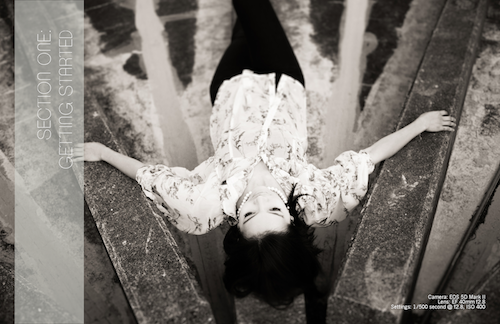
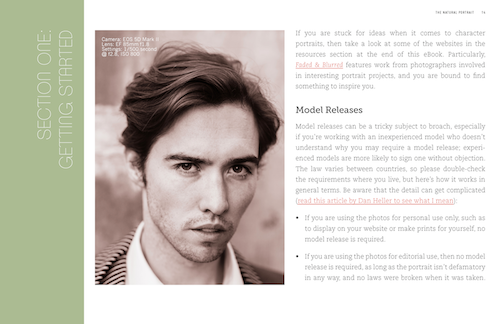
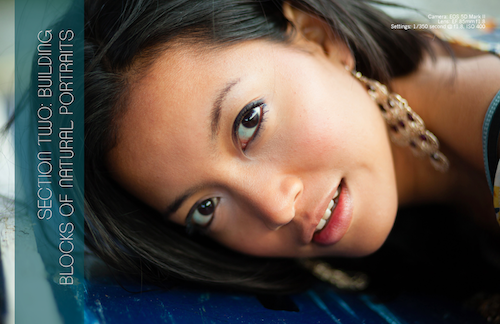

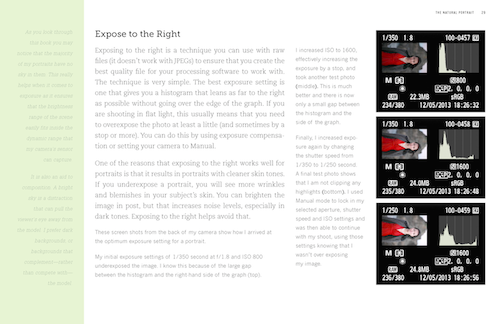
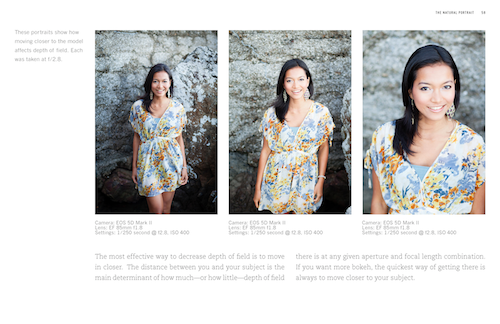
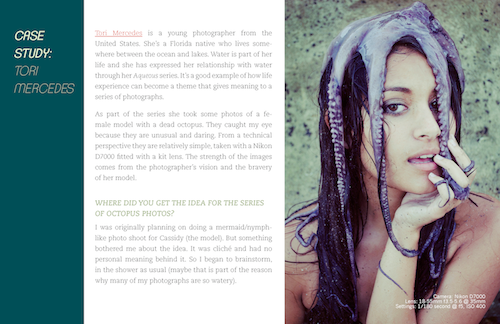
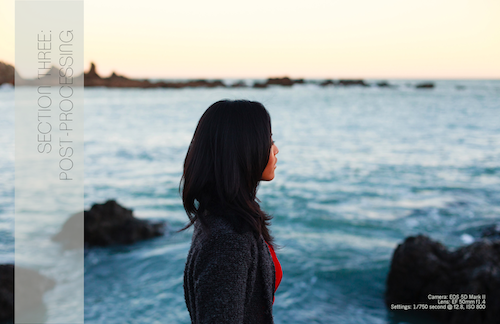
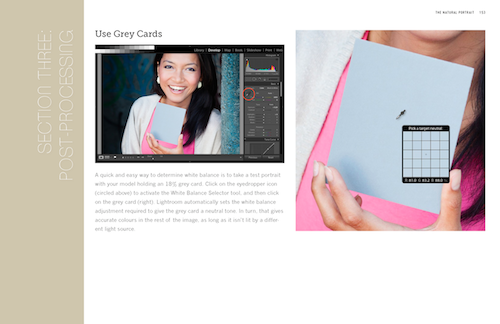
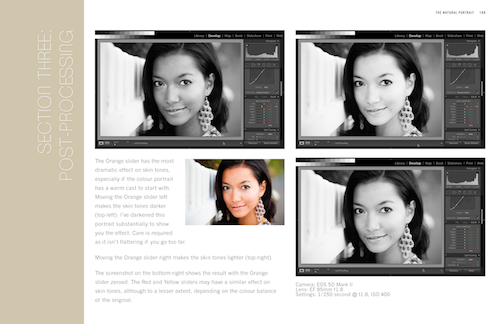
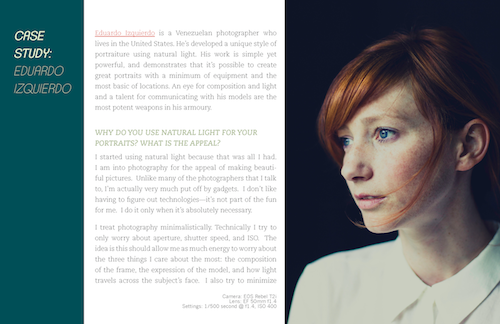
January 8, 2014
Postcards from Lalibela
A week ago a group of us landed in Lalibela, Ethiopia about the same time as thousands of orthodox pilgrims were arriving from all over the country. We spent the last week in this high dusty town, walking among the centuries-old churches, all carved from the red rock on which this town sits, and waiting for orthodox Christmas.
Unique in ways I’ve not encountered anywhere else in Africa, Ethiopia is hard to describe to those who haven’t been, and Lalibela is even more so. After being exiled to Jerusalem by his brother the king, Prince Lalibela eventually returned to his home with the intention of building an African Jerusalem, and this town – some 2600 meters in the mountainous north of Ethiopia – was where he built it. Churches here, all intricately carved from the rock, and joined by tunnels and bridges, are alive; they throng with life, the priests and pilgrims moving to the rhythms of a faith practiced here for many centuries. The walls are hung with tapestries, the floors covered in carpets, all of it lit from high carved windows and the odd bare bulb, placed wherever the rock allows. It’s crowded and dusty and full of mystery and humanity.
No surprise then, that I love it here. On Christmas morning we woke early to welcome the sun with the thousands of pilgrims, gathered around one of the larger churches, singing and hanging out in growing blue of dawn and the yellow of candlelight. I helped an elder pilgrim down a steep hill, only to get to the bottom and find it was he who was helping me and wanted payment for his services. From my perspective I paid an old man to let me help him down a hill. Merry Christmas. Then I sat with the masses to watch a preacher hurl his sermon into the crowd while the sun began its climb into the sky, and felt like I could have been sitting at the feet of John the Baptist, all wild-haired and full of fury. There’s nowhere in the world I’ve been that’s felt more like a journey back in time.
Coming out of one of the churches a man greets me with a smile and says something I don’t quite catch. We try a few more times and my ear keeps missing. One last try and I get: How do you like the churches? What do you feel?” Perhaps it’s just a quirk of using a language not completely his, but it catches me off guard. Not “what do you think?” but rather, “how do you feel?” I feel wonder, brother. I feel wonder.
December 30, 2013
2013 Retrospective
It’s the nature of time to go too quickly. Maybe that’s one of the reasons photography works so well for me: in making time one of our raw materials we pay more attention to it, honouring it down to thousandths of a second, more present, more perceptive. I wish paying more attention slowed it down somewhat, and while it can’t seem to do that, it sure does deepen it. Every year I write a couple pages in my notebook, a looking-back on the year and the new chapters I’ve added to my story. It’s an exercise that makes me smile, brings back memories and refreshes my gratitude.
I began this year with Cynthia in Tsavo, a needed break to see part of Kenya I haven’t seen yet. We spent the week drenched in sunlight and birdsong before flying to the coast to sit by the ocean in Diani, read some books, and make a few photographs, before I headed north with the BOMA Project to continue our work photographing the Samburu, Rendille, and Turkana people with whom BOMA does such great work. Corwin and I bumped through the Kaisut desert, ingested a lot of dust and sand, drank a few warm Tuskers, swam in Lake Turkana, and visited my village where we slaughtered a camel and celebrated with them. I sat in a circle of Rendille elders while they re-told my story and prayed for me. One of the most alive moments of my life.
After Kenya I had time to clean my gear and re-adjust a little to the time zones before flying to Tokyo to join Martin Bailey for a couple weeks photographing in the cold north of Japan, mostly in Hokkaido. Many early mornings fumbling for vending machine coffee, and much sushi and sake in the evenings. In between there were snow monkeys and red-crowned cranes, eagles and swans, and beautiful snow-bound landscapes. There might also have been karaoke.
After Hokkaido I came home to warm up, wash some clothes, and get a little office work done before flying to Italy to spend the month exploring Venice and Liguria, eat some magnificent food, enjoy the company of friends, and run my Fuji XE-1 through its paces, only to discover to my shock that I didn’t miss my DSLR at all. We also celebrated two years without falling off a wall.
From Venice it was home to Vancouver to dust off my long lenses and rain-covers and head up the British Columbia coast to Prince Rupert where a float plane took me to the Ocean Light 2, a 72 foot ketch-rigged sailboat, one of only two boats permitted to take people into the estuary of the beautiful Khutzeymateen, a protected sanctuary for the Grizzly Bear. I spent a week there in the most intimate company of some beautiful bears, new friends, and the kind of noisy silence I’ve only found in the Pacific Northwest when it rains without ceasing.
I came home from the Khutz to sign the first shipment of my new book, SEVEN, putting to bed the hard work of creating my first limited edition fine-art book, and wondering what possessed me to promise to hand-sign and number 1000 books. But what a thrill to hold something you’ve made and are so proud of and know that a thousand of them will be on coffee tables around the world. Humbling. SEVEN started shipping at the end of May just as I was heading off to the CAPA conference in New Brunswick to share the podium with Freeman Patterson, a man who has been my mentor, unknowingly, since almost the day I picked up a camera. To sit with him and share wine, stories, and laughter, will long be one of my most beautiful and surreal moments.
July took me back to coastal British Columbia, to camp near Tofino and then fly north again to join the Ocean Light 2 again for a week in the Haida Gwaii. I came home just in time to pick up a different bag and head to Bali, Indonesia to speak at the What If? Conference.
August was spent preparing for, and beginning, what was to be a nomadic month in the Jeep photographing the Yukon. We got two weeks into the trip, found our rhythm, experienced the Sour-Toe Cocktail in Dawson City, then headed up the Dempster Hwy just in time to catch the most astonishing colours flame out across the landscape, and for me to drive an axe into my leg, just above the ankle, cutting short our trip and putting me back into a cast. I spent most of September and October re-thinking my position on chopping my own wood.
The end of October brought a week in Oaxaca, Mexico for the Within The Frame Oaxaca Adventure, still in a cast but grateful to be out and about. Then it was a road trip from Arizona to Vancouver, up the west-coast, and settling in for the coming of the holidays and the making of plans for Ethiopia, Kenya, and Tanzania, a trip I begin tomorrow, January 01.
I’m conscious as I write this that I’m the luckiest man in the world. Client work and the growth of Craft & Vision over the last few years has given me the gift of work I love, a woman whom I met in Italy nearly 3 years ago and has my heart so completely it takes my breath away, and chances to see this world in a way many never will. I’m deeply, deeply grateful. As I said, time moves quickly, and I want to take in as much as I can before the shutter closes. Thank you so much, to all of you, for your encouragement, for your kindness when adventures go awry, for joining me on some of my travels, for reading my books, and this blog. I’ve been told often that people live vicariously through me, and I hope that’s a good thing, though it scares me a little. May 2014 be the year we all renew our search for new adventures; the year to do something that scares you, thrills you. Go watch The Secret Life of Walter Mitty (the new one). At one point there’s a photograph of Sean Penn’s character on the wall. He’s a photographer, Leica in hand, in an IDP camp in Africa. And as Mitty looks at the image it comes alive, animated for only a moment, but it gestures to him to come, invites him to stop watching other people’s stories, and to live his own. Consider for a moment, whatever that adventure is, that our lives are of uncertain length, but with the capacity to be of nearly infinite depth. Make the most of it.
From the bottom of my heart, you have my gratitude and love.
David, Dec.31, 2013
December 28, 2013
Mirrorless to Africa
In a couple days I fly to Africa for almost 6 weeks. A week in Lalibela, Ethiopia, then to Kenya to spend 10 ten days in my beloved Maasai Mara to take my mother on her first safari, and then to Zanzibar for over two weeks to get my scuba certification and spend time with my camera in the water. And I’m doing it all with smaller mirrorless cameras. Not an SLR in my kit. I’m quite comfortable with my Fuji XE-1, and because I’m not one to chase fast-moving predators, I think the 55-200 lens will give me all the reach I need, but I’ve also got a rangefinder that’s new to me and I’m already nervous about the learning curve. It’s a bit of a rag-tag kit, but I’m excited about how much lighter this is allowing me to travel, without having to sacrifice image quality.
What excites me is not just the smaller kit, but the change in process. There are advantages – strong advantages – to knowing your camera so well you hardly know it’s there, but the advantage that comes with switching things up for me is a fresh awareness of my decisions. I’m more careful about metering, pay more attention to focus, and in this slowing down usually comes more careful attention to my composition and choice of moments. For me the ability to do all this with smaller and smaller bags of gear means I can walk longer, and when I get tired it’s creative exhaustion, not the exhaustion that comes from not wanting to walk one more foot with all the gear. I’ll be walking through Lalibela and the ancient, rock-hewn, churches crowded with pilgrims, with 2 rangefinders and 2 lenses. A couple small batteries in my pocket. Maybe a spare lens in my bag, but they’re so small compared to my DSLR gear that I could bring 3 of them and still not take the weight of a 24-70/2.8. I can’t wait. Why else am I excited? My smaller cameras are almost silent, I feel much less conspicuous with them, and in the case of the waist-level finder on my Leica, there’s an ability to compose with a much less aggressive posture and that’s really important to me when photographing something so personal as a pilgrimage.
On safari I’ll still have two cameras, one wide and one the 55-200 (the equivalent of 300mm of reach on a 35mm frame). What excites me most is documenting my time with my mother, but for longer scenics, this telephoto ought to be fine. And then when I get to Zanzibar I’ll be mostly using my Sony Rx100 (Mark II) with a Nauticam underwater housing which is smaller and seems infinitely easier to use than the Aquatech rig I have for my Canon 5D, which will stay at home, enjoying its retirement. I got my housing at Backscatter – check out the amazing selection of housing for some of today’s most current compact cameras – including Olympus, Canon, Nikon, and Panasonic)
As a technological development, mirrorless cameras mean almost nothing to me. I still have my DLSR gear and love it. I still have 3 film cameras and love them too. But as the quality improves so does the ability to travel with, and work with, gear that allows us to expend our creative energies the way we want to. I can’t wait to do an around the world trip, or head back into the Indian Himalaya with this lighter gear.
What does this newer kit look like? For the geeks among us, I’ll put my packing list below. It’s astonishing how much lighter and smaller things are becoming compared to just 5 years ago. Questions? Put them in the comments. I’ll reply as I can.
As always, I’ll check in when I can, though I don’t imagine that’ll be for at least a week or two. Postcards as I can send them. Check in this Tuesday for a look back in words and images at 2013.
My packing list:
Fuji XE-1
14mm, 18-55mm, 55-200mm
Leica M (240)
21mm, 50mm, 75mm
Sony RX100 (II)
Water housing, mask, snorkel
Spare batteries, chargers
SD card reader, SD cards
11″ MacBook Air
Hard drive
Lee Filter kit, Singh Ray filters (10-stop, 3-stop, 3-stop grad, polarizer)
Gitzo Traveler tripod
Shutter release
Cleaning kit, repair kit
Plug adaptors & power strip
5 shirts
2 pants
2 shorts
1 sweater
1 raincoat
1 hat
4 each – underwear, socks.
Boots, sandals
Medical and first aid
Toiletries
Spare glasses
12 x Clif bars
December 26, 2013
Hokkaido Landscapes with Martin Bailey
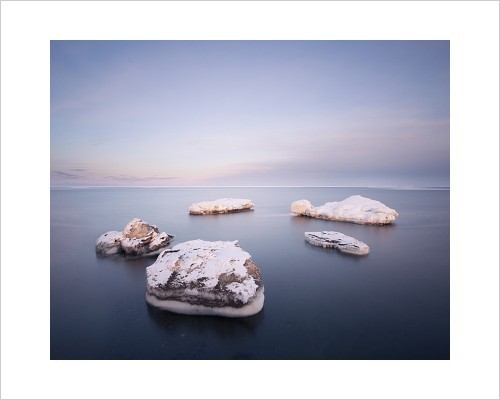
I fell in love with Hokkaido, Japan, last year. I joined Martin Bailey as a guest on his Winter Wonderland tour, and spent almost two weeks photographing monkeys, cranes, eagles, and beautiful landscapes. I wanted more of the landscapes and Martin and I talked long and hard about the possibilities. So the second he started getting serious about running a landscape trip in Hokkaido for 2015, I saved my spot, and earlier this week he announced the details and opened applications for registration.
As I write this the snow is falling in Vancouver and has me nostalgic for Hokkaido, which kind of blew my mind last year. This will be a really great adventure. The weather can get quite hairy on the Hokkaido coast, which accounts for much of its beauty. Martin tells me there’s a chance we could get snowed in, which makes it even more exciting to me. If nothing excites you like the thought of cold, and very early, mornings, hunkered over a tripod in the snow and pointing your lens at something beautiful on the north sea of Japan next winter, this is the trip for you. I can hardly wait to drop my first filter or lens cap into 4 feet of snow. 
Many of you know that, for the time being, I’ve stopped doing workshops and tours. Mostly this is because I need time in 2014 to get my feet fixed (once and for all, I hope). I may resume them at some point in the future. But it won’t be for a couple years. For now, if you want to do a great photography tour, and have a chance to connect with me and hang out in sub-zero temperatures and deep snow on the northern Japanese coast, this is that chance (and likely the last chance for a long while.) I’m going as a special guest which means I’m not technically an instructor, but like Martin, I’m passionate about teaching and there will be lots of time to talk if you’re looking for instruction, or time to wander through the snow together looking for something amazing to photograph, or just a chance to tell stories over a bowl of udon and a bottle of sake.
We laughed a lot last year, spent time in the natural hot springs at many of the hotels, enjoyed some amazing (and strange) food, and made some really beautiful memories and photographs. Martin’s tours fill quickly, and with good reason. He’s an excellent teacher and guide and I’m looking forward to being with him again, to both teach and learn. Full details, the trip itinerary, and images from the areas we’ll be visiting, are on Martin’s website.
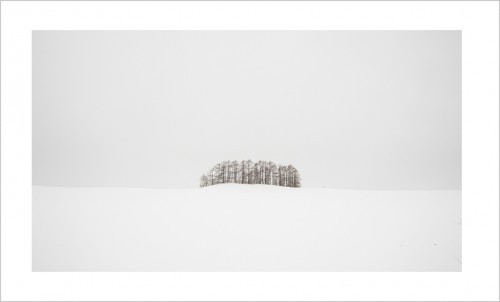
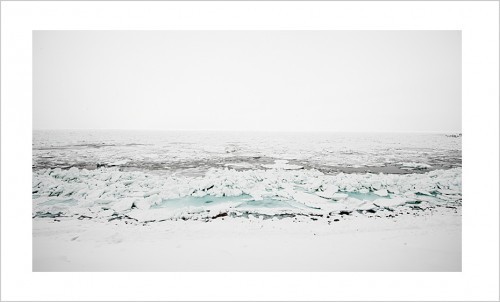
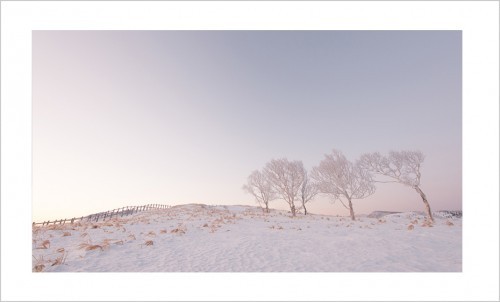
If Japan doesn’t suit you, and you want to spend time with other passionate photographers more in love with photographs than gear, check out Jeffrey Chapman’s Within The Frame Adventures, which we did together for years and which he now runs with exceptional photographers and guides all over the world. But if you want Hokkaido landscapes in winter with a photographer who lives and works in Japan, and a chance to spend time with me, this is your chance. See you there.
December 19, 2013
Christmas Presence.
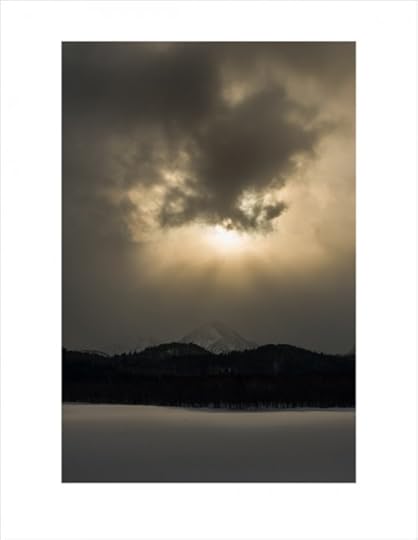
In the coming days, if you’ve not done so already you’ll see all kinds of articles about making better holiday photographs. They’ll be filled with advice from the banal and obvious, to the dubiously helpful. Mostly they’ll be written to drag people to their blogs, and increase traffic, when those same people should just shut the laptop and be with loved ones. So I’ll keep my own thoughts brief. And then I’ll shut my own laptop and I’ll come back sometime after our own celebrations on December 24th and 25th.
Do you want to take better holiday photographs? Bring a camera and show up. Spend more time with your friends and family. Arrive earlier, stay later. Laugh harder. And be truly present. Step back once in a while and listen to the laughter, observe what’s really going on. And make a lot of photographs. Because honestly, many of them won’t be your best work. But years from now you won’t care. Years from now even this season’s worst photograph will mean something to you when some of the friends and family that are present now are no longer with us. Out of focus, poorly exposed, hastily composed, they’ll mean more to us than the very best of our work, because we won’t be after Facebook “Likes” or re-tweets on Twitter. We won’t give a damn if it gets pinned to Pinterest in the face of missing the ones that mean so much to us.
Want better holiday photographs? Be present. Be there and intentionally make the moments you will look back on, in the worst of your quickly-taken snapshots, and remember as moments in which you were alive, laughing, giving, playing, and in the presence of a beauty in front of which the greatest landscape will feel lifeless: the love of family and friends. Every year we welcome new family, and collectively we all painfully say goodbye to people whose presence we’ll long for for the rest of our lives. Even the poorest photographs of those people and our shared moments with them will be worth more than any gift we give or receive. No photograph in the world will bring back your baby girl’s first Christmas or your grandmother’s last. Be there. Presence beats presents every time.
Whatever you celebrate at this time of year, whether it’s the winter soltice, Christmas, Hanukkah, or the astonishing fact that we made it around the sun and found life in her light for one more year, I wish you the very best. In hope against hope, may this be the year for peace on earth, light in the darkest corners, and water in the driest lands.
With Gratitude and Love,
Merry Christmas, friends.
David.
December 16, 2013
Pushing Light
One of the big challenges of working with light is the contrast between light and dark and the ability of film or sensors to capture that full range. The camera just doesn’t see the way we do sometimes. PUSHING LIGHT is a 112-page discussion of this problem and the various solutions to it. These days HDR processing gets a lot of attention, and as with any technique, it has it users and abusers, fans and critics. But used well it can express our photographic vision in ways other techniques can’t. But it’s not the only technique. The dynamic range challenge can be addressed with filters, reflectors, and fill flash, as well as the various ways of doing HDR processing with elegance and subtlety. PUSHING LIGHT is about these techniques, and as he always does, Piet Van den Eynde digs in with the expertise of a total geek and the goals and vision of an artist. PUSHING LIGHT also includes links to 12 different short videos to clarify, and add to, the discussion.
Anyone that’s had Piet’s books knows what a great educator he is, and PUSHING LIGHT is no different. It’s meaty and clear, and well-illustrated, and will help you wrap your mind around some of the fundamental challenges of working with light, both in the camera and the digital darkroom.
Find PUSHING LIGHT for $10 on the new Craft&Vision website. If you get Craft & Vision’s The Contact Sheet, you’ll find the recent issue has been sent to you and there’s a coupon code for $2 off in there, along with the usual giveaway – this month it’s a $250 Gift Card for B&H Photo. Don’t get that newsletter? Sign up here and it’s yours. And while you’re there check out the new, free, mostly-weekly C&V video podcast, About The Image.


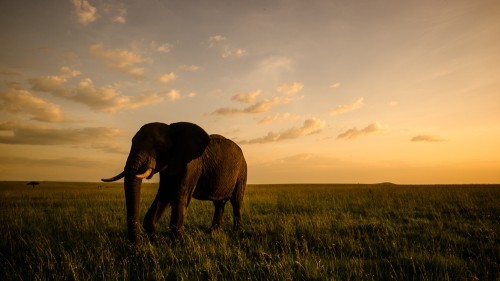
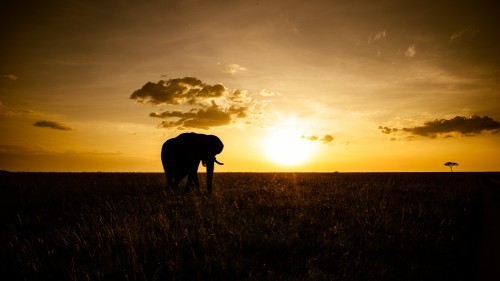
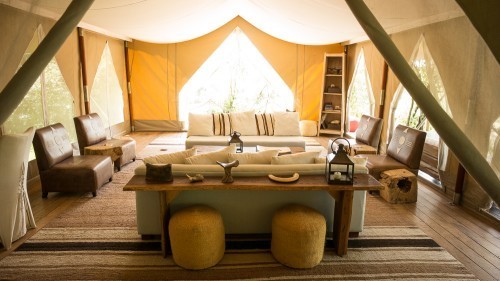
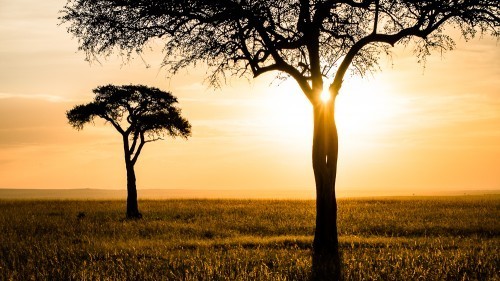
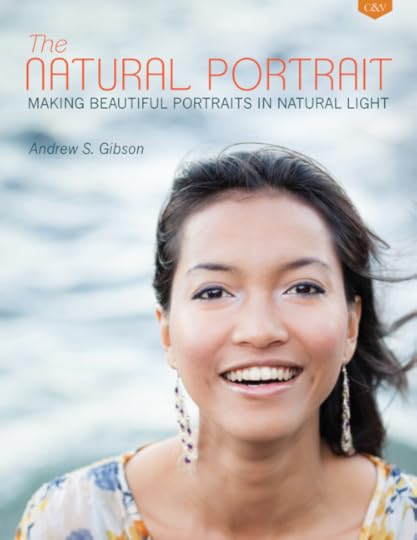
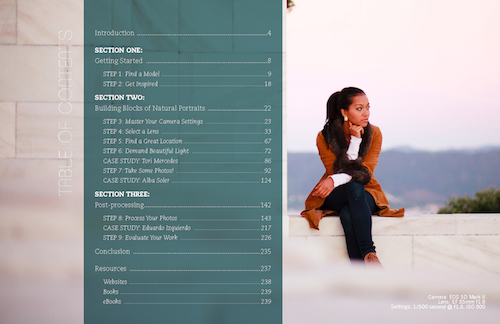
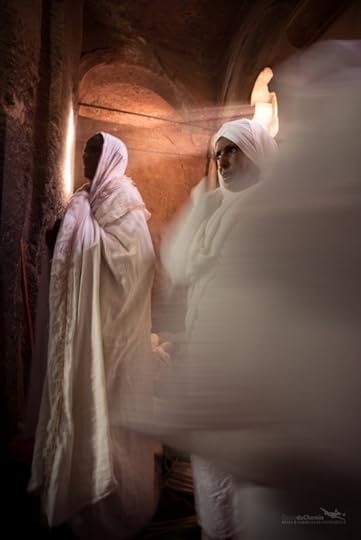
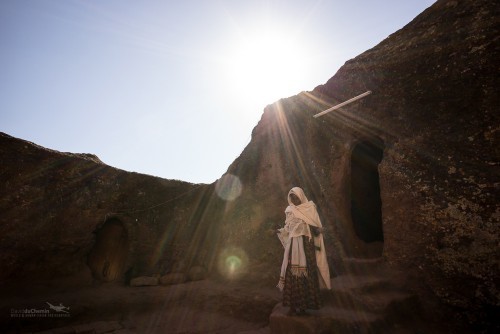
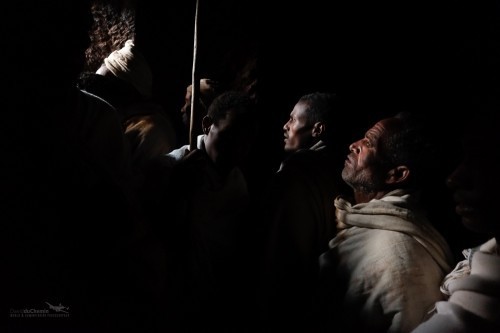
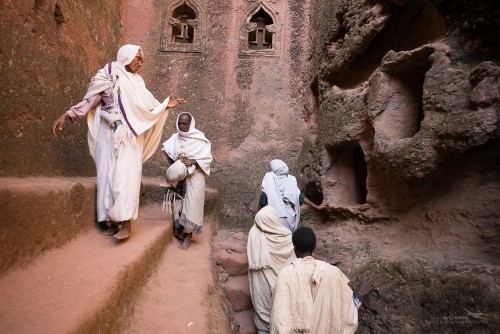
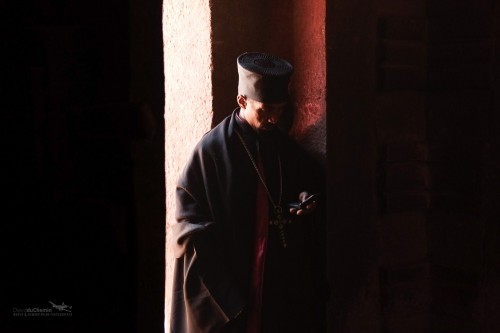
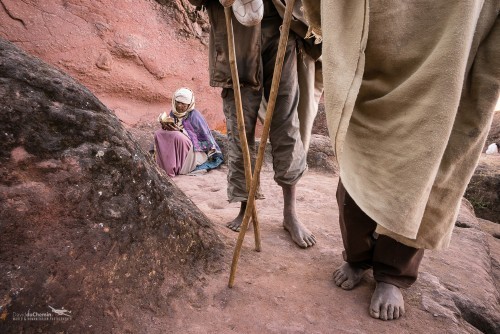
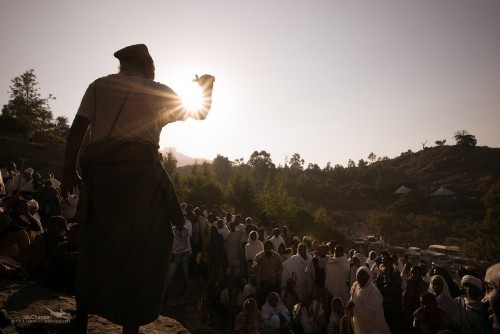
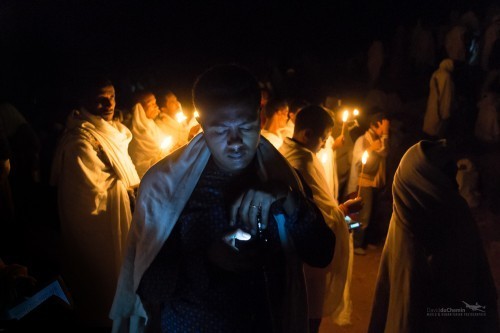
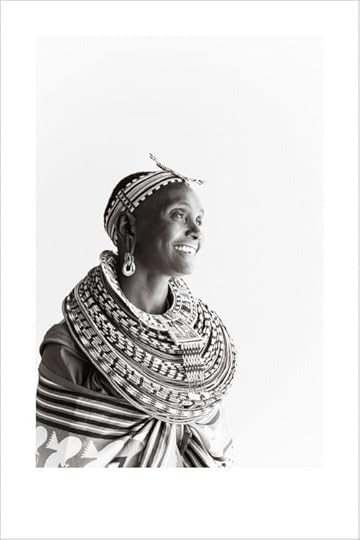
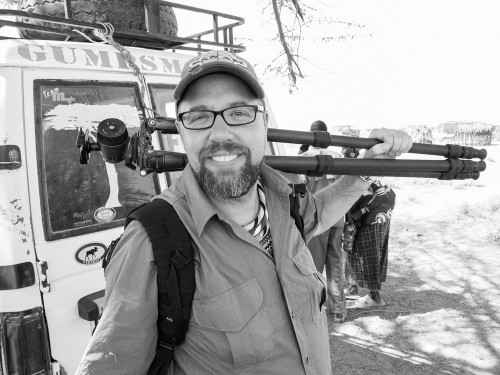 Kenya, January 2013.
Kenya, January 2013.